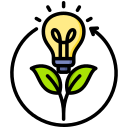
Smart Home Technologies for Energy Efficiency
Smart home technologies are revolutionizing the way we manage energy in our living spaces. By intelligently monitoring usage and automating controls, these innovative solutions save electricity, lower utility bills, and reduce overall environmental impact. As more homes become connected, understanding how smart systems optimize efficiency is key to maximizing their benefits and making sustainable living more accessible.
Previous
Next
Intelligent Climate Control
Smart thermostats stand at the forefront of intelligent climate control. Unlike traditional thermostats, these devices learn household routines and adjust temperatures automatically based on occupancy and preferences. Over time, their adaptive learning reduces energy consumption by only heating or cooling when necessary. Many models connect to other devices, allowing remote adjustments via smartphones. By combining occupancy detection with weather forecasts, smart thermostats ensure that energy isn’t wasted when no one is home or during optimal outdoor conditions. This level of automation not only streamlines daily routines but significantly cuts down on utility costs.
Automated Lighting Management
Smart lighting equipped with occupancy and motion sensors provides seamless illumination management. These sensors detect physical presence, automatically switching lights on when someone enters a room and off when it’s unoccupied. This approach slips unnoticed into daily routines but dramatically reduces wasted electricity, especially in spaces where lights are often left on inadvertently. The sensitivity and timing of these sensors can be tailored to individual preferences, ensuring a balance between immediate response and energy savings. In addition to conserving electricity, this feature adds convenience by removing the need for manual operation, particularly in high-traffic or irregularly used areas such as hallways, bathrooms, and closets.
Previous
Next
Smart plugs are an accessible entry point to energy-efficient living. By connecting standard appliances to these devices, users gain visibility into individual energy consumption patterns. Integrated monitoring features display real-time and historical data, exposing energy-intensive habits and standby consumption that might otherwise go unnoticed. Through automation or remote controls, smart plugs can schedule devices to turn off when not in use, cutting wasted power. Over time, this granular insight encourages homeowners to make informed decisions about which gadgets to upgrade or replace, reinforcing a culture of mindful—and cost-effective—energy use.

